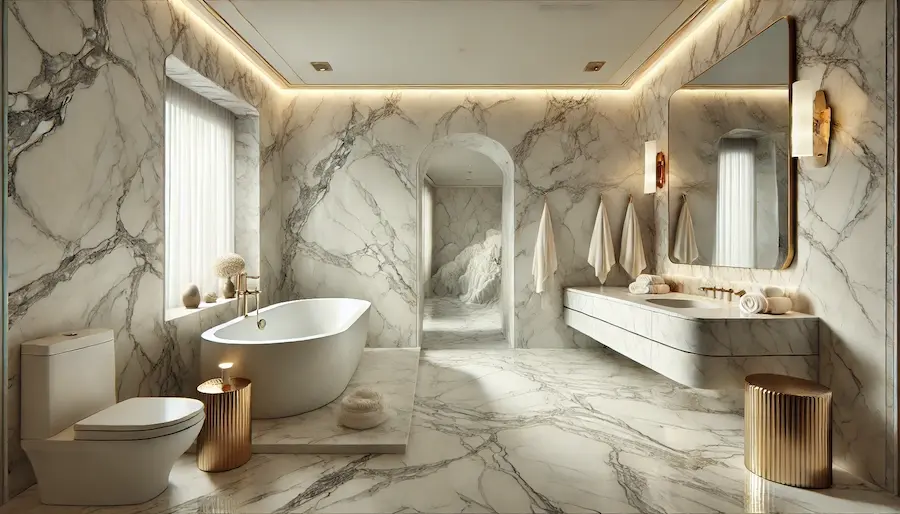Marble bathrooms epitomize luxury and timeless elegance, seamlessly blending natural beauty with functionality. This article explores the history, key features, applications, and considerations for designing a marble bathroom.
Introduction to Marble Bathrooms
Marble, a metamorphic rock renowned for its distinctive veining and wide range of colors, has been a favored material in architecture and interior design for centuries. In bathrooms, marble introduces a sense of opulence and sophistication, elevating the space beyond mere utility.
History and Origins of Marble Bathrooms
The use of marble in construction dates back to ancient civilizations, notably Greece and Rome, where it symbolized wealth and artistry. Classical structures and sculptures, such as the Parthenon and Michelangelo’s David, showcase marble’s enduring appeal. In residential design, marble bathrooms became particularly popular during the Renaissance and have experienced resurgences in various architectural movements, including contemporary design, where they are prized for their natural beauty and durability.
Key Features of Marble Bathrooms
- Aesthetic Appeal: Marble’s unique veining patterns and color variations make each installation one-of-a-kind, adding a bespoke quality to bathroom designs.
- Versatility: Available in various finishes—polished, honed, or tumbled—marble can complement styles ranging from classic to modern.
- Durability: With proper care, marble withstands the humid bathroom environment, maintaining its beauty over time.
- Value Addition: Incorporating marble can enhance property value due to its association with luxury and quality.
Applications of Marble in Bathrooms
- Flooring: Marble tiles provide a durable and elegant flooring option, with finishes ranging from polished to honed for slip resistance.
- Walls: Marble accent walls or full cladding add texture and visual interest, creating a focal point in the bathroom.
- Countertops and Vanities: Marble countertops offer a luxurious surface that is both functional and aesthetically pleasing.
- Showers and Bathtubs: Marble-lined showers and carved marble bathtubs enhance the spa-like atmosphere of the bathroom.
Considerations When Choosing Marble for Bathrooms
- Maintenance: Marble is porous and susceptible to staining and etching from acidic substances. Regular sealing and the use of pH-neutral cleaners are essential to preserve its appearance.
- Cost: Marble is generally more expensive than other materials. Budgeting for both the material and professional installation is crucial.
- Slip Resistance: Polished marble can be slippery when wet. Opting for a honed or textured finish in wet areas can enhance safety.
- Environmental Impact: Consider the sustainability of marble, including the quarrying process and transportation. Exploring reclaimed or locally sourced options can mitigate environmental concerns.
Conclusion
A marble bathroom embodies a blend of natural beauty and luxury, offering a timeless appeal that enhances any home. By understanding its history, applications, and maintenance requirements, you can create a marble bathroom that is both stunning and enduring.
